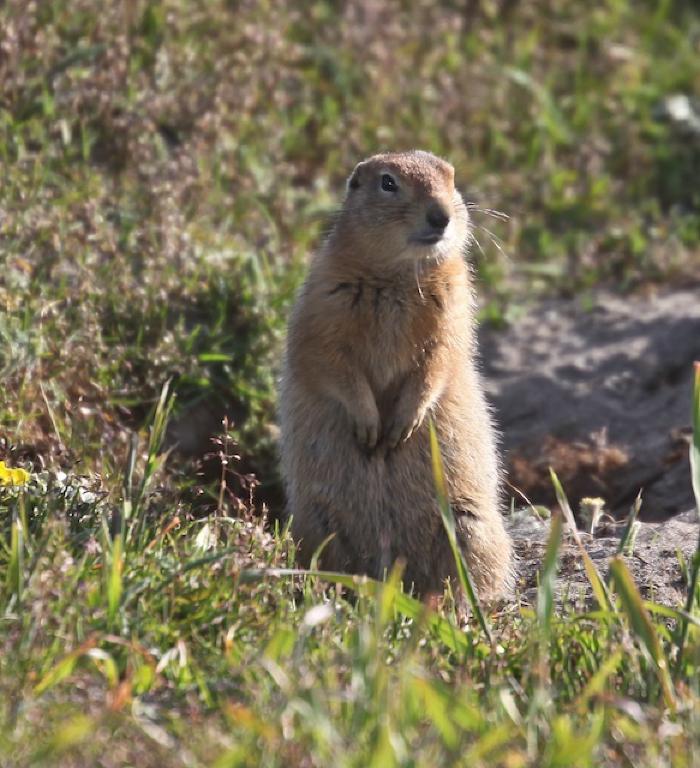Ground Squirrel — Qanganaq

The arctic ground squirrel (Spermophilus parryii) is the largest ground squirrel in the new world. Known also as the tsik tsik, for its distinctive call, these plant-eating furbearers weigh up to two pounds and are about fifteen inches long. They have blunt faces, bushy tails, and a distinctive white speckled coat. Arctic ground squirrels occur widely across northern Canada, Alaska, and eastern Siberia and as far south as northern British Columbia.
Throughout the North, Native people trapped ground squirrels for food and clothing. Alutiiq people sewed their small furs together to make warm coats. A man’s ground-squirrel parka collected from the Bristol Bay village of Ugashik in 1883 features more than sixty pelts stitched together with sinew. This long, loose-fitting, hoodless robe was embellished with pieces of ermine, sea otter, and caribou furs.
Ground squirrels can be seen around northeastern Kodiak Island today, particularly in the Buskin River valley. They are also found on Chirikof Island and formerly inhabited Marmot Island. However, they are not indigenous to the region. Like many other Kodiak furbearers—beaver, muskrat, hares, and red squirrels—they are an introduced species. Archaeologists believe that Alutiiq people introduced these small mammals to the archipelago in prehistoric times, based on an abundance of ground squirrel remains in the archaeological sites on Chirikof Island and the animals’ limited capacity to reach the islands without human assistance.
How did Alutiiq people get pelts for clothing? Historic sources suggest that ground-squirrel pelts were traded to Kodiak from the Alaska Peninsula, Chirikof Island, and regions farther west. On Kodiak, therefore, ground-squirrel parkas were prized as a sign of wealth and influence.
